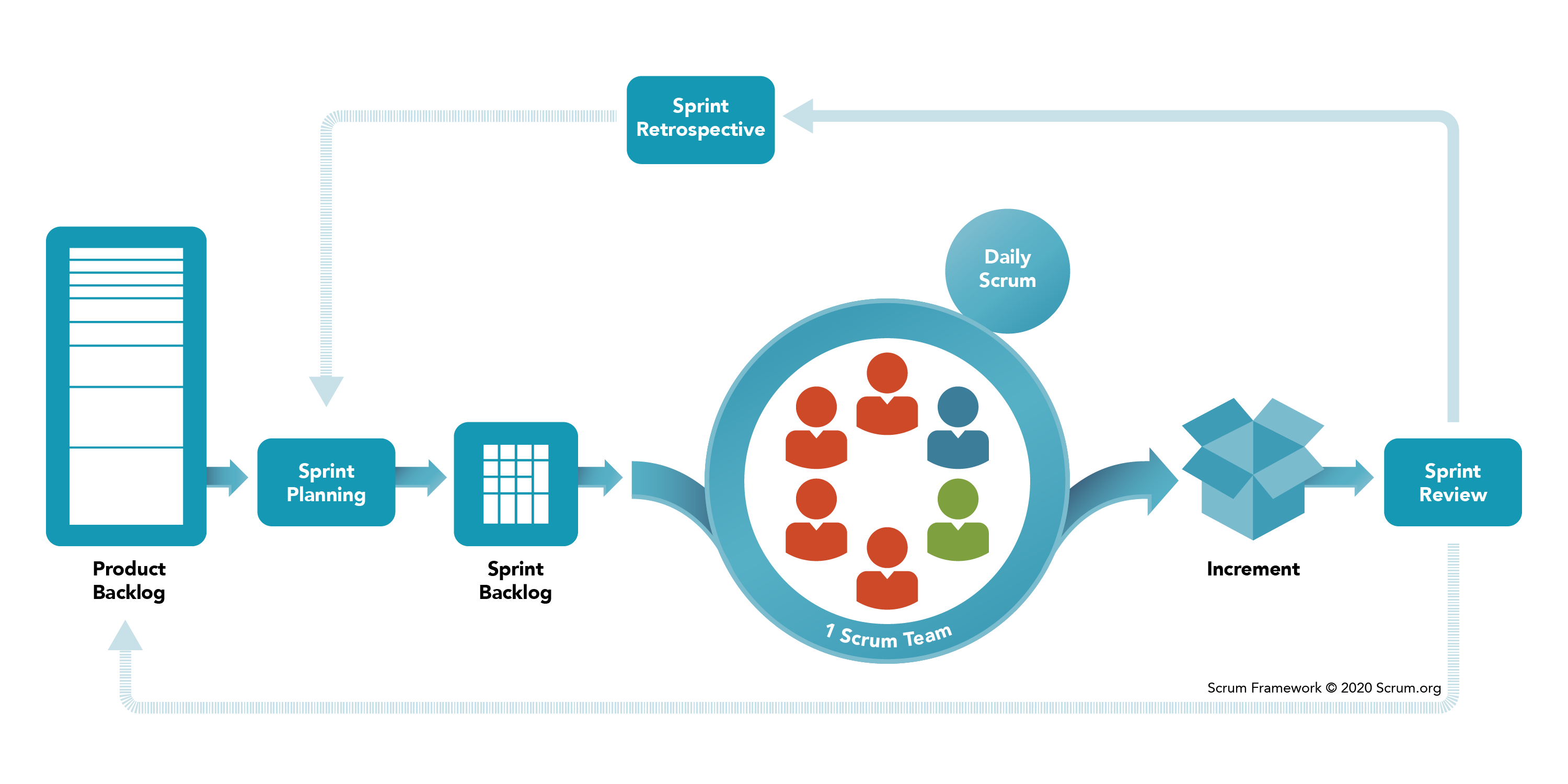Scrum is a framework within which people can address complex adaptive problems, while productively and creatively delivering products of the highest possible value.
Scrum is a lightweight framework that helps people, teams and organizations generate value through adaptive solutions for complex problems. Scrum co-creators Ken Schwaber and Jeff Sutherland have written The Scrum Guide to explain Scrum clearly and succinctly. This Guide contains the definition of Scrum. This definition consists of Scrum’s accountabilities, events, artifacts, and the rules that bind them together.
In a nutshell, Scrum requires a Scrum Master to foster an environment where:
- A Product Owner orders the work for a complex problem into a Product Backlog.
- The Scrum Team turns a selection of the work into an Increment of value during a Sprint.
- The Scrum Team and its stakeholders inspect the results and adjust for the next Sprint.
- Repeat
Scrum Glossary
The Scrum Glossary is meant to represent an overview of Scrum-related terms. Some of the mentioned terms are not mandatory in Scrum, but have been added because they are commonly used in Scrum.
To learn more about the Scrum framework, to identify which of these terms are required elements of Scrum and to understand how the mentioned elements are connected, we highly recommend that you reference The Scrum Guide. To learn more about terms specific to software development teams using Scrum and agile software development techniques, reference the Professional Scrum Developer glossary.
The Scrum Framework
Scrum is simple. It is the opposite of a big collection of interwoven mandatory components. Scrum is not a methodology. Scrum implements the scientific method of empiricism. Scrum replaces a programmed algorithmic approach with a heuristic one, with respect for people and self-organization to deal with unpredictability and solving complex problems. The below graphic represents Scrum in Action as described by Ken Schwaber and Jeff Sutherland in their book Software in 30 Days taking us from planning through software delivery.

The Scrum Team
The fundamental unit of Scrum is a small team of people, a Scrum Team. The Scrum Team consists of one Scrum Master, one Product Owner, and Developers. Within a Scrum Team, there are no sub-teams or hierarchies. It is a cohesive unit of professionals focused on one objective at a time, the Product Goal.
The Scrum Events
Prescribed events are used in Scrum to create regularity and to minimize the need for meetings not defined in Scrum. All events are time-boxed. Once a Sprint begins, its duration is fixed and cannot be shortened or lengthened. The remaining events may end whenever the purpose of the event is achieved, ensuring an appropriate amount of time is spent without allowing waste in the process. The Scrum Events are:
- Sprint – Спринт
- Sprint Planning – Планирование спринта
- Daily Scrum – Ежедневный скрам
- Sprint Review – Обзор спринта
- Sprint Retrospective – Ретроспектива спринта
Scrum Artifacts
Scrum’s artifacts represent work or value to provide transparency and opportunities for inspection and adaptation. Artifacts defined by Scrum are specifically designed to maximize transparency of key information so that everybody has the same understanding of the artifact. The Scrum Artifacts are:
- Product Backlog – Бэклог продукта
- Sprint Backlog – Бэклог спринта
- Increment – Инкремент